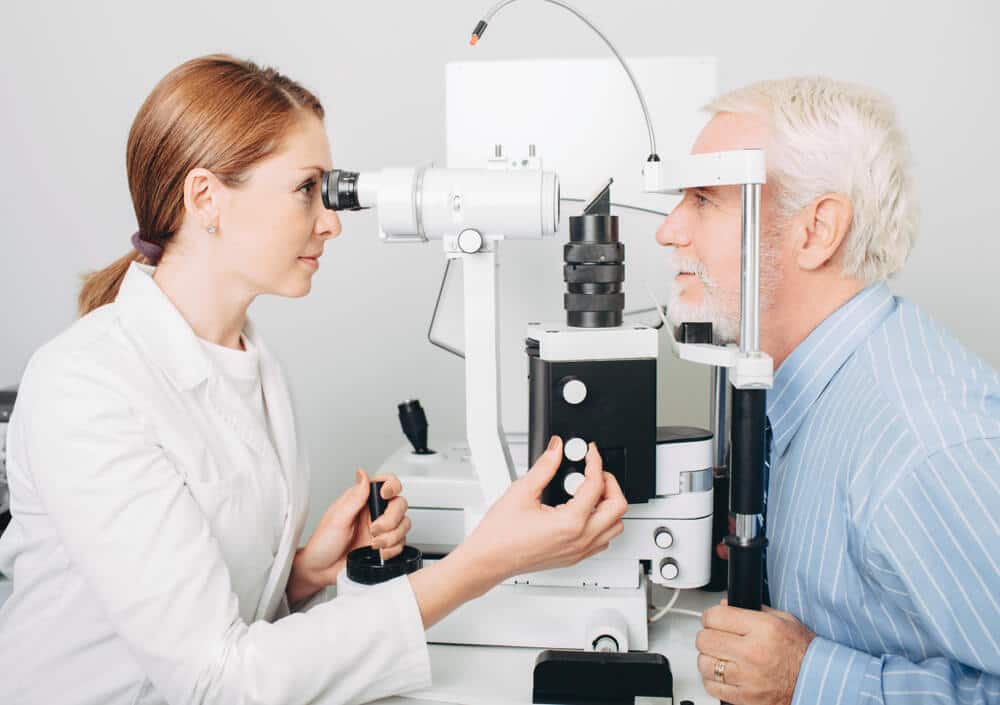Central Retinal Vein Occlusion

Do you have a retina condition? At Retina Associates of Middle Georgia, our practice treats retina conditions, including central retinal vein occlusion. We’re here to help our patients by providing the best retina care possible.
What is a Central Retinal Vein Occlusion?
A central retinal vein occlusion (CRVO) is a condition that occurs when the central vein in the retina closes off, either slightly or entirely. The main vein in the retina is necessary for draining blood out of the retina. If it can no longer move this blood out, it can lead to blurry vision or other concerning eye problems.
The retina has one main artery and one primary vein. If the main retinal vein gets blocked, it’s a central retinal vein occlusion. Blocking this vein means blood and other fluids can spill out and damage the retina.
The macula may swell when fluid spills out, affecting your central vision. When there’s no longer enough blood circulation, nerve cells in the eye can die off, causing further vision loss.
Signs and Symptoms of a Central Retinal Vein Occlusion
If you have a mild central retinal vein occlusion, you may not show any signs. However, symptoms of a central retinal vein occlusion can include the following:
- Experiencing blurry or distorted vision
- Having mild symptoms that worsen and get better are called transient visual obscurations
- If you have a more severe central retinal vein occlusion and you also have glaucoma, you may have redness, pain, or irritation
- Seeing floaters
- Losing all vision suddenly
If you experience these symptoms, make sure to see your eye doctor as soon as possible to avoid further vision loss.
What Causes a Central Retinal Vein Occlusion?
A central retinal vein occlusion occurs when blood flow is blocked due to a blood clot in the retina’s primary vein. You may experience a CRVO if the walls of your arteries become too narrow or they stiffen.
If the artery walls get too stiff, it could compress the main vein and result in a central retinal vein occlusion.
Who is Most at Risk of Developing a Central Retinal Vein Occlusion?
If you’re fifty years of age or older, your risk of developing a central retinal vein occlusion increases. Your risk of developing this condition also increases if you’re overweight, have diabetes, glaucoma, high blood pressure, or arteriosclerosis (hardening of the arteries).
• Exercising regularly
• Eating healthy and sticking to a low-fat diet whenever possible
• Doing your best to maintain a healthy weight
• Not smoking or quitting if you’re a smoker
If you follow a healthy lifestyle, you may be able to reduce your risk of developing a CRVO.
Treating a Central Retinal Vein Occlusion
When treating a central retinal vein occlusion, the goal of treatment is to stabilize your vision. At Retina Associates of Middle Georgia, one way that we treat a central retinal vein occlusion is by using anti-VEGF injections.
Anti-VEGF Injections
These injections help reduce any swelling in the macula by targeting VEGF (vascular endothelial growth factor). Patients with CRVO have an elevated amount of VEGF, which causes swelling and the creation of new blood vessels that bleed and leak.
Anti-VEGF injections are periodically injected into the eye to reduce new blood vessel growth and swelling. Because anti-VEGF injections are not a cure, patients may need injections over several years.
Steroid Injections
Another way to treat a central retinal vein occlusion is with steroid injections in the eye. These injections usually last several months and help reduce swelling.
It may take a few months after treatment before noticing any visual improvement. There’s also no guarantee that your vision will improve after anti-VEGF injections or steroid injections. Some patients don’t see any change; visual improvement is only based on your central retinal vein occlusion severity.
Have more questions about treating a central retinal vein occlusion? Request an appointment at Retina Associates of Middle Georgia in Warner Robins, GA, now.


